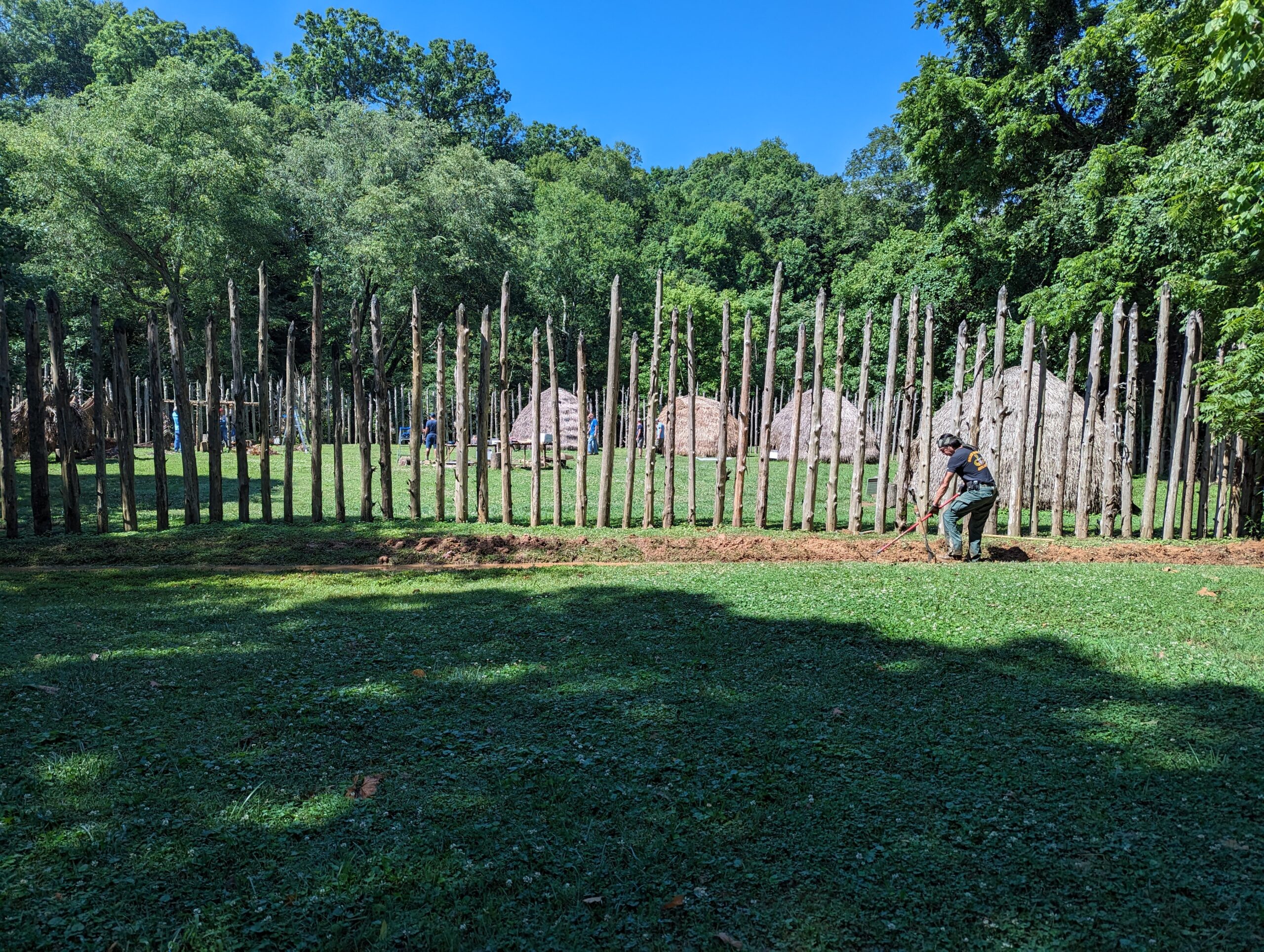The Alliance is a proud partner with the Occaneechi Band of the Saponi Nation (OBSN) and Orange County, helping to reconstruct and revive the Occaneechi Replica Village. This initiative honors our indigenous community and vividly portrays history through a scaled model of Occaneechi Town.

Currently known as “New Quarry” and owned by Duke University, the North Carolina Governor Thomas Burke deeded this land to George Mayo in the early 1800s. The family owned a working quarry on the “mountain” until the property was sold for $500 under duress in the 1920s. George Mayo (a descendant of the original owner) reluctantly agreed to sell the property after he was jailed for his refusal. The land again changed hands and ended up with neighbor Patrick L. Clayton who sold it to James B. Duke for $4,000.
LEARN MOREThis building likely served as the coachman quarters for Jesse Ruffin, the enslaved driver owned by NC Supreme Court Judge Thomas Ruffin. In 1829, Ruffin wrote the “State v. Mann” decision, which gave masters complete control over those they enslaved. During renovations, the property owners located two bricks inscribed “Dec 5, ’65” – the date when North Carolina ratified the 13th Amendment to the US Constitution. Historians and Jesse Ruffin’s descendants believe the inscription was his memorial to the day when he drove the Judge to the signing of the amendment as an enslaved person and returned as a free man.
LEARN MOREOccaneechi Village is a historic replica of a village located on the Eno River in the early 1700s. The Occaneechi Band of the Saponi Nation was closely involved in the recreation efforts for the historical trading village. Starting in the 1980s, University of North Carolina researchers began excavations at the site of the original village. The Occaneechi people lived in what is now Virginia and North Carolina. While disease and warfare greatly diminished the Occaneechi population, many descendants of the tribe continued to live in Hillsborough.
LEARN MOREYou can almost taste the smoky pork when Walter Faribault, Jr., describes his family’s barbeque tradition. Faribault is a descendant of a line of cooks who worked throughout the Piedmont. The legacy started with Henderson Faribault, a cook who gifted each of his children land on Faribault Lane. Walter Faribault’s father, Walter Sr., had a barbeque building on Faribault Lane that served as a cookhouse and a stand that sold to customers.
LEARN MOREThe former midwife’s retirement community sat near the corner of Faribault Lane and Exchange Park Lane. While the exact location is lost to history, descendants of the midwives know that their ancestors retired to town somewhere near this spot. Two renowned midwives, Fanny Breeze and Peggy Faribault, delivered generations of babies of all races and ethnicities in Hillsborough. Fanny Breeze, who lived on the Eno River at the top of a hill, would cross what is now known as “Fanny’s Ford” to deliver babies in the mid-1800s. Peggy Faribault, like Breeze, was enslaved until emancipation. Faribault delivered babies well into her 80s.
LEARN MOREThe building that currently serves as Dickerson’s Chapel AME Church has a long, important history for the Black community. Originally a county courthouse – where historical records show young Black residents were bound into involuntary “apprenticeships” – the building changed hands and moved to its present site in 1845. The building served as a church and then a school for free Black children before becoming Dickerson’s Chapel in 1886. The church also served as a site for organizing during the struggle for equal civil rights. Today, the stained-glass church windows still bear the names of congregational families, many of whom were and are pillars in the community.
LEARN MOREFor three decades, the Warner Complex was a hub for Black entrepreneurship – housing everything from barber and soda shops to laundromats and printing presses. Roosevelt Warner, Sr. grew up in an orphanage in Oxford, N.C., and learned the brick-laying trade. His first partnership was his marriage to his wife, Fanny Warner. From there, the two ran numerous businesses, including renting out retail space in the Warner complex from the 1960s through to the 1980s.
LEARN MOREThe exact origins of the Margaret Lane Cemetery are not known, but the written records first mention the site in 1885. Research suggests that the cemetery was set aside in 1854 as a burial ground for enslaved people. After the Civil War, the cemetery continued as a burial site for Black families until the last known internment in 1931. After the last burial, the cemetery fell into disrepair, and most gravestones and monuments were destroyed and removed. Recent restoration efforts include tree planting, a bronze memorial plaque, and a brick monument.
LEARN MOREInitially called the “Hillsborough High School for Negroes,” Central High School served students from first through 12th grade. The school hosted several buildings on its campus, such as Mrs. Agnes’ Kindergarten, which also served as the public library for the Black community. The original school building, erected in 1937, burned down in 1958 and was rebuilt. Many Black Hillsborough leaders graduated from the school, which closed in 1968 after a series of student walkouts led to the full integration of Orange County Schools.
LEARN MOREThe Shanklin family’s printing press business is gone, but it was a key part of the Hillsborough community from the 1960s until the 1980s. The press moved several times, but each new location became a place where Black people gathered to talk politics. Shanklin’s Press printed a news sheet with the events of the Black community and posters promoting entertainers. The press was also an important source for candidates seeking to print political materials. Historical records show the press printed many memorial programs for funerals in the Black community and one book.
LEARN MORE


In partnership with the Hillsborough Tourism Board, the Alliance has worked alongside OBSN representatives to curate interpretive signage for the Village to help tell the story of the Occaneechi people. Visitors can now read how the Village came to be, learn about UNC’s archeology findings of the original Occaneechi Town, and discover more about heritage of this community.
The Replica Village is reconstructed and maintained by local volunteers. Currently organized by OBSN representative, Beverly Payne, volunteer work days are scheduled throughout the year. Because of their hard work, dedication, and passion for Village, this site encompasses four huts, a fire pit, lean-to, palisade, and a work arbor.
Parking can be found at the Eno River Farmers Market – 144 E Margaret Lane. The Replica Village is located off the paved River Walk path, south of the Farmer Market Pavilion.
Photography Credit: Hillsborough Photography